GAMES WITH GEOMETRIC FIGURES These games are designed for children from 8 months. Before starting classes, you need to learn a few simple rules: All tasks should be offered in the form of a game, and the mother should also participate in the games. Before class, check that everything is comfortable and there is nothing to distract from the game. Remember that you should start any activity only after the baby is fed, calm and in a good mood. All offered for the game didactic materials should be bright, beautiful, interesting. They should not be in the toy box. Be sure to hide everything after each lesson so that the child does not get tired of them. During the game, do not rush to give the correct answer. Let the kid think a little. Give it as long as it takes. Be patient. Perhaps it is worth offering him the next task, and then returning to the uncompleted one. Be sure to praise your child for a successfully completed assignment. But don't overdo it. Don't overwork your baby. Play less time (15-20 minutes), but more often (2-3 times a day). Be attentive to the child and you will definitely know when to stop. Finally, end each session on a positive note, regardless of the results. How to make and play games with geometric shapes. Cut out various geometric shapes from thick cardboard (circle, square, rectangle, triangle, etc.). Each figure should be 7 pieces. Paint circles, triangles, squares, etc. in the colors of the rainbow (red, orange, yellow, green, cyan, blue and purple). Thus, you should have seven different colored shapes of each type. You can make shapes that are different not only in color, but also in shape: large and small. Such unpretentious material will help your little ones learn 7 basic colors, shapes and forms. The classes that we offer will help develop logical thinking, perseverance, memory, attention. Task 1. Fold a strip of different shapes and ask your child to build the same. The sample can be left in front of his eyes. Task 2. Fold simple patterns (circle, square, triangle, circle, etc.). Ask your baby to continue this pattern on his own. Task 3. Build a picture from geometric shapes (a car or a Christmas tree). The kid will be happy to repeat after you or come up with something on his own. Task 4. Build a picture from geometric shapes (a car or a house). Ask the child to turn away and change something (for example, put on wheels of a different color or different shape). Let the kid name what has changed. Task 5. Ask the kid to collect all the circles in one box or pile, all the squares in another, and so on. You can ask to divide all the shapes by color or size. Task 6. Construct a line from shapes, for example, 3 circles and 1 square. Ask what is superfluous? The answer is a square. You can make up such dependencies both in shape, size and color. Remember that no one knows their baby as well as you, dear mothers who spend with him most time.
- thick paper or cardboard (preferably colored);
- ruler;
- pencil;
- scissors;
- glue (better than PVA).
- Squares, circles, triangles of different colors. Squares, circles are the same, triangles of different sizes and shapes. Two sets of figures: one for an adult, the other for a child. They can be bought in sets or cut from colored cardboard.
- Small rubber or plastic animals, little people.
- The bunny has a small house.
- The bear-bear has a big one. (We add in the same way).
- A small Christmas tree was growing near the bunny's house. (Christmas tree made of 2 triangles).
- There is a large one next to the bear's house. (From 3-4 triangles)
- What is the difference between Zaykin's house and Bear's?
- Why does the bear need to build? big house? Because it's big and won't fit into a small house. You can remember the cartoon "Teremok", as the bear destroyed it.
- Show me a big house, a small house.
- Big (small) Christmas tree.
- Count the trees.
For the manufacture of volumetric geometric shapes, the main thing is to have templates that can be cut and then glued.
Can be made from white or colored paper. Can be cut out of paper with any drawings or numbers.
I propose to make an unusual volumetric figure using the origami technique. Watching the video:
In order for children to better remember what geometric shapes are, and know what they are called, you can make volumetric geometric shapes... By the way, on the basis of them you can make a beautiful gift wrap.
You will need:
The most difficult thing is to develop and draw development plans, you need at least basic drawing knowledge. You can take ready-made maps and print them on a printer.
To keep the fold line straight and sharp, you can use a blunt needle and a metal ruler. When drawing a line, the needle must be strongly bent in the direction of movement, practically laying it on its side.
This is a sweep of a three-sided pyramid.
This is a cube sweep

This is a sweep of an octahedron (tetrahedral pyramid)

This is a dodecahedron sweep

This is a sweep of the icosahedron

Here you can find templates for more complex shapes (Platonic Solids, Archimedean solids, polyhedra, polyhedra, different types pyramids and prisms, simple and oblique paper models).
Volumetric geometric shapes are the best way the study of the world by the kid. An excellent study material / excellent study guide for studying geometric shapes is, in fact, three-dimensional shapes. In this way, geometric shapes are better remembered.
The best material for making such volumetric figures is thick paper (you can color) or cardboard.
For manufacturing, you will need, in addition to paper, a pencil with a ruler, as well as scissors and glue (cut and glue the reamers).
You need to draw a sweep in a similar way and cut them out:



Then they need to be glued edge to edge.
You should get the following kind of volumetric geometric shapes:






Here are some schemes by which you can make 3D geometric shapes.
The simplest one is tetrahedron.

It will be a little more difficult to make octahedron.

But this volumetric figure - dodecahedron.

One more - icosahedron.

For more details on making three-dimensional figures, see here.
This is how the non-assembled volumetric figures look like:

And this is how the finished ones look like:

You can make many original crafts from bulk geometric shapes, including gift wrapping.

Before you start making three-dimensional geometric shapes, you need to imagine (or know how it looks) the figure in 3D dimension: how many faces this or that figure has.
First, you need to correctly draw a figure on paper along the edges, which should be connected to each other. Each figure has a specific shape: square, triangle, rectangle, rhombus, hexagon, circle, etc.
It is very important that the length of the edges of the figure, which will be connected to each other, have the same length so that no problems arise during the connection. If the shape consists of the same faces, I would suggest making a template while drawing to use this template. You can also download ready-made templates from the Internet, print them, bend them along the lines and connect (glue).
Cone pattern:

Pyramid pattern:

You will need to make volumetric geometric shapes both on schoolwork, and for the study of figures with babies. This process can be turned into a game by making dense volumetric geometric shapes out of cardboard.
To make figures, we need - a pencil, a ruler, colored cardboard, glue.

You can print diagrams from the Internet, then apply them on thick paper, not forgetting about the fold lines that will stick together.
And you can use the following schemes:






But they are already in finished form.

So you can have fun and usefully spend time with your baby, studying geometric shapes.
Having independently made volumetric figures out of paper, you can not only use them for entertainment, but also for training.
For example, you can visually show the child how this or that figure looks, letting it hold it in your hands.
Or, for the purpose of training, you can print out diagrams with special symbols.
So I suggest that you familiarize yourself with the seme below dodecahedron, both simple and with small drawings that will only attract the attention of the baby and make learning more fun and entertaining.


Also the scheme Cuba can be used to teach numbers.



Scheme pyramids can help you understand the formulas that apply to this figure.


In addition, I suggest that you familiarize yourself with the diagram octahedron.



Scheme tetrahedron among other things, it will help you learn colors.








As you understand, the above templates must be printed, cut, bent along the lines, glued along special narrow stripes adjacent to the selected sides.
Volumetric geometric shapes are simply necessary in teaching: they provide students with the opportunity to hold them in their hands, to consider, which is an important part of the educational process, they are simply necessary as a guide when studying the famous Euler's theorem - clearly demonstrating that even with deformations, curvatures, the number of polyhedron faces , and hence the Euler relation, will remain unchanged:
In addition, 3-D shapes can be an excellent tool to help students explain how to find the surface area of a polyhedron.
So, using the templates below, you can easily make the following shapes:
Triangular Prism

N-angle prism

Tetrahedron

From parents who come to consultations, I often hear: with algebra, wherever it went, but does not understand geometry at all.
Prevention of this situation should be started as early as possible. And do not divide children by gender. To come up with a style of a dress is also a design.
We've already talked about building from counting sticks, builder. Topic of this article: Constructing from geometric shapes. It is useful to start designing from geometric shapes at the age of 2.5-3.
Parents usually consider babies of this age to be foolish, but this is not so. At this favorable age, the creative right hemisphere is actively developing. There will be no other such period.
But, of course, you won't give a three-year-old a figure so that he builds something there on his own. You have to sit next to him and teach. Unfortunately, the trend is now to buy more toys. This is called "creating a developmental environment". And the child pokes at them, slowly turning them into scrap. Even kindergartens have forgotten the truth: learning leads development.
Constructing from geometric shapes
Materials.
Game progress
We play necessarily a fairy tale. The adult lays out the figure and waits for the child to copy it. You must sit next to the picture so that the picture is not "upside down" for the baby.
Fairy tale 1.

Display toys at some distance from the place of work.
We add a picture from our set in front of the baby's eyes. The child needs to copy the sample.
Discussion.
Enough for the first lesson. If you have paper shapes, you can glue them. This will make a great applique. Mom can draw animals, after asking who lives where.
Fairy tale 2.
In the next lesson, we replace the bear with another animal, for example, a hedgehog. We construct the following tale.
The hedgehog also lived in the forest. He had a small house. The hedgehog had a car that he loved to ride and ride on business. Once a bunny came to visit the hedgehog. The hedgehog looks, he has nothing tasty. Nothing to treat a friend to. The hedgehog went to a large store, and the bunny was waiting at home. He rode past large and small trees. I bought a gingerbread hedgehog, a bagel and cabbage with carrots and went home.
Offer your baby to build a home. If he doesn't remember, put the sample back from your set of geometric shapes, and let the child copy.
Build a car and wait for the kid to copy it. The hedgehog went by car.
Let's fold the big store and the road to it.

Ask him to show with his finger in which direction the machine will go. And where should she go with purchases? (also pointing the finger)

Discussion.
We repeat the construction, replacing the animals with a cat and a mouse, a monkey and others. The most important thing is that the new pair should be of different sizes (big-small). Then only fantasy works.
The animals decided to go on a journey. We drove to the station by typewriter. And there they plunged into the train. We drove for a long time. Finally they saw the sea. A yacht was waiting for them at sea ...
 Etc. The rest was wonderful. We flew back by plane.
Etc. The rest was wonderful. We flew back by plane.
 This is something like this in a fairy tale and actions, you can lay down elementary constructive skills as early as 2.5-3 years.
This is something like this in a fairy tale and actions, you can lay down elementary constructive skills as early as 2.5-3 years.
Didactic game in mathematics for children senior group Preschool
Description: the material will be interesting and useful to preschool educators, employees of additional education, leaders of "Entertaining Mathematics" circles, parents
Appointment: the material can be used as a didactic game, as part of a FEMP lesson, applications, design, in individual work, in the independent activities of children
Integration: cognitive, speech, social and communicative, artistic and aesthetic development
Purpose: the formation of the ability to construct from geometric shapes
Tasks:
educational: teach children to arrange geometric shapes according to tables-diagrams;
developing: develop an eye, visual memory, orientation in space;
educational: develop an interest in designing from geometric shapes.
Methods and techniques: playful, visual, independent activity of children, individual tasks, use of the artistic word
Preliminary work: lessons on FEMP in the sections "Geometric figures", "Orientation in space", classes on applications on the topic "Panels of geometric figures", construction from a flat and three-dimensional constructor in the corner "Young builder"
Plan:
1. Conversation about modes of transport.
2. Designing according to schematic tables.
3. Didactic task"Get it by youself"
4. Application work.
5. Outcome. Analysis.
The content of the work:
1.Educator:
People have always believed in miracles and composed fairy tales about Carpet - Airplane, Emelin Stove, Boots - Speedboats because there was always a need to move somewhere. But this is all a fabulous, fake transport that "works" only in a fairy tale.
And in our life, transport is different - it is what actually moves: it drives, floats, flies, transports goods, passengers. If we need to go somewhere, sail, fly, we use transport.
What types of transport do you know?
Children's answers:
- ground: car, bus, bike, motorcycle ...
- underground: metro
- air: airplane, helicopter, rocket, balloon ...
- watercraft: motor ship, boat, boat, yacht ...
2.Educator: I will make riddles about transportation. Whoever guesses gets a table schema and adds up what he guessed.
1) What kind of bird:
Doesn't sing songs
Nests do not twist
Are you carrying people and goods?
Look - the plane
He sings a song to us:
U-u-u
Soon I'll fly to the sky!
2) Give me a quick answer:
A few years will pass
And from the Earth faster than light
Will fly to the stars ... (rocket)

Here is a rocket under the rainbow
Soared to the skies
And the same rocket
I built it myself!
3) The palace floats on the waves-
People are lucky on themselves.

The boat is sailing, sailing
To distant lands.
Who is the captain of the ship?
of course it's me!
4) What a miracle - a long house,
There are a lot of passengers in it,
Wears rubber shoes
Does it eat gasoline?

The stop is empty:
Everyone is on the bus, inside.
And now it's half the battle
Take everyone home.
5) And we have fun in our family:
Celebrating housewarming.
Moved in a moment
and helped us ... (truck)

Why our truck
Not used to being lazy?
On his back, he carries a body for large and small loads.
6) I drink gasoline and eat oil,
Though not hungry at all.
And without them I'm so sick
That I won't be able to go!
I am so brilliant
And, of course, a passenger car.
I rush along the road with an arrow
You can't keep up with me!

3. Educator: And now I invite you to come up with your own model of transport from the same sets.

4. Educator:
What kind of transport would you like to stick on and decorate our exhibition?
Answers and choice of children.

5.Educator:
Summarize:
What did we do? (the modes of transport were designed according to the tables-schemes)
What have you learned? (construct modes of transport from geometric shapes)
What did you like? (guess riddles, stick geometric shapes ...)


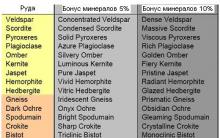
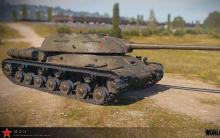
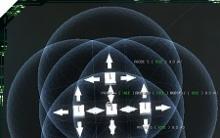
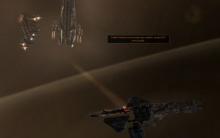
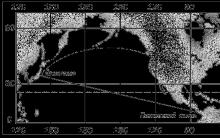




Mouse for pillbox 2. Guide for setting up a mouse. The best mice for MOBA games
ESET NOD32 Parental Control Application Test: How Parental Controls Works
Summary: Calendar of significant and memorable dates
Playing cards tattoo
Interesting logic When the network can draw water